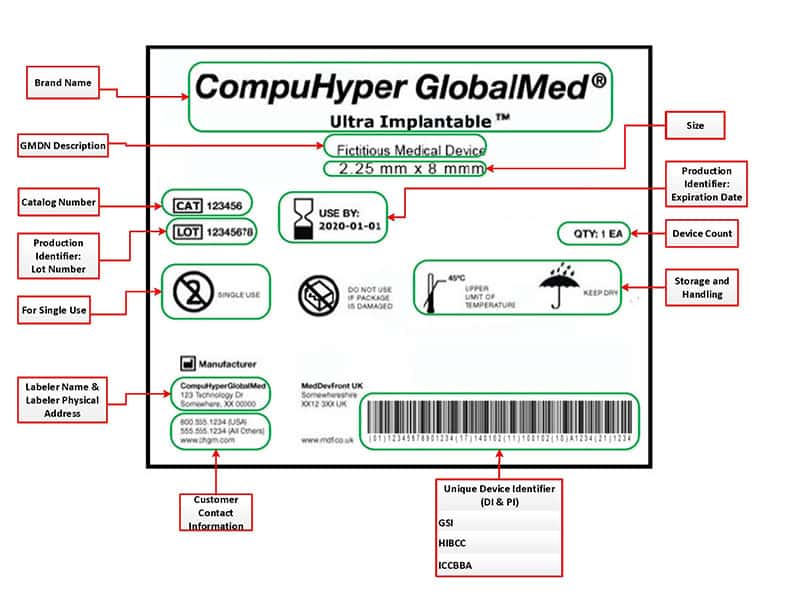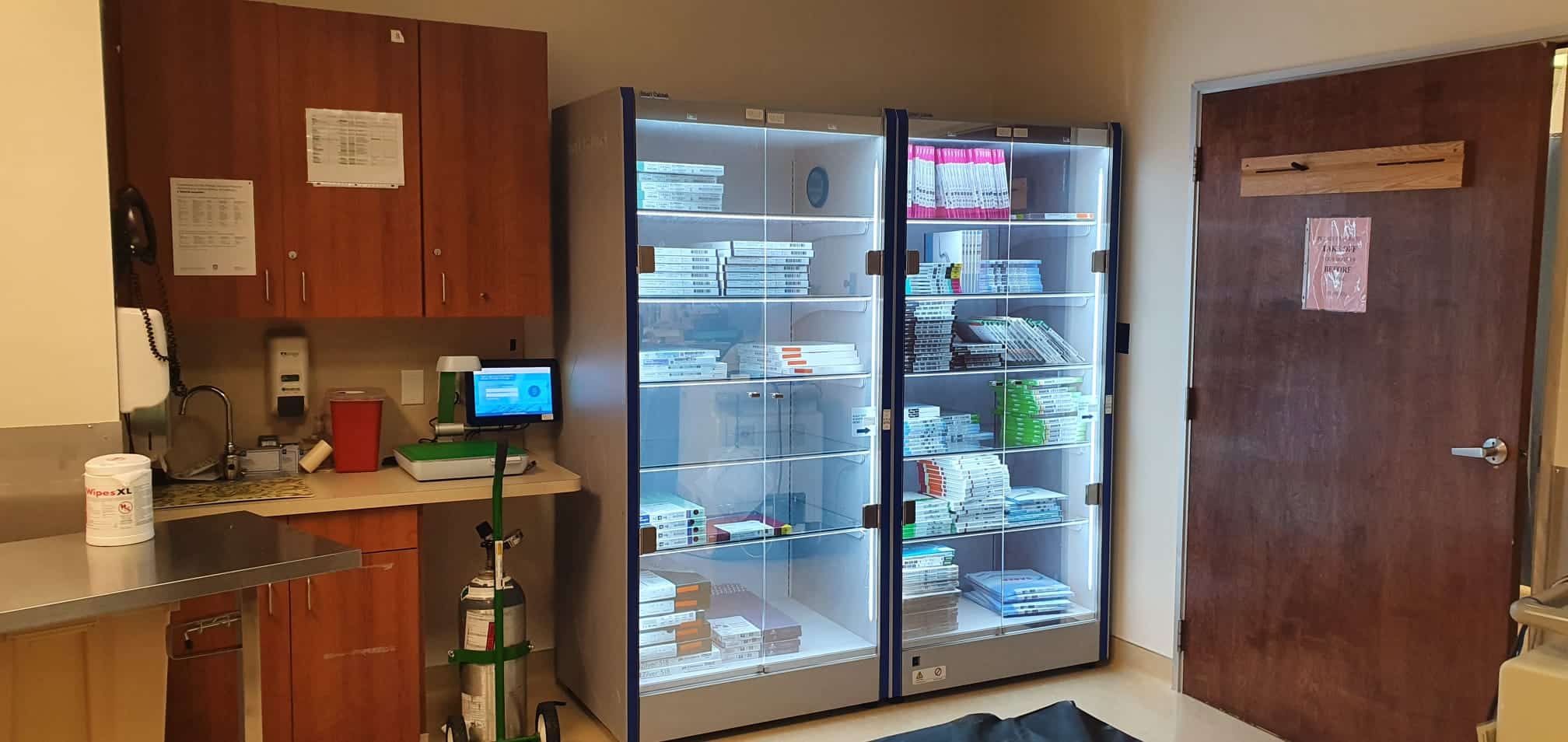What’s inside:
Healthcare automation solutions for provincial health systems
The future of healthcare inventory management is automation – in this article we look at:
- How automatic medical inventory systems can reduce costs while adding speed and efficiency.
- Why smart inventory management tools improve medical inventory control.
- Why Canadian health systems need to prioritize achieving the real-time tracking of implants, tissue and medical devices.
- The potential for a Canadian UDI system
- How hospital inventory management software is improving management decision-making.
Improving the efficiency of provincial health systems in Canada
Automating inventory management can contribute to improved clinical and operational performance, so getting the right systems and tools in place has the potential to make a big impact on Canadian healthcare providers.
In recent years, Canadian health systems have placed an increased focus on improving the management of medical inventory.
There are several ways that Canadian hospitals can add efficiency to their medical inventory systems, tools and procedures.
- Automatic medical inventory systems can improve inventory visibility, reduce the stock at hand and help streamline inventory management workflows. The overall aim is to reduce costs while adding speed and efficiency.
- Smart inventory management tools improve medical inventory control which helps provincial health systems in Canada to reduce wastage, monitor usage and restrict orders to just those items required – putting an end to surpluses and stockouts.
- Achieving the real-time tracking of implants, tissue and medical devices is often the priority of provincial healthcare supply chain infrastructure in Canada, due to the need for better data to improve patient safety. As a Canadian UDI system is under discussion this issue will continue to be a priority.
- Hospital inventory management software is effective at capturing and analyzing inventory data, which leads to the provision of accurate metrics, reports and analytics. This crucial management information helps management to make better, data-based decisions.
Let’s take a look at each of these points in more detail.

Automatic tracking of implants, tissue and medical devices
Medical device tracking software enables the medical inventory supply chain to keep track of implants, tissues and medical devices throughout their lifecycle – from manufacture right through to consumption.
Automated implant tracking systems provide digital tracking that gives the supply chain inventory visibility, from the point of manufacture, through distribution and then consumption. After consumption there should be an electronic record linking the product to the patient.
Implant tracking is topical right now, as last year Health Canada carried out an initial consultation on the potential implementation of a Unique Device Identification (UDI) tracking system in Canada. Options being considered for implementation across the provincial health systems in Canada include the development of a UDI database to track products, using standardized individual item identifiers and based on global standards. It is anticipated that the UDI database would store a list of core data elements about medical devices.
Health Canada states, “In Canada, there are over 1 million medical devices on the market. While Canadian-based device identifiers are used for medical devices, there is limited ability to differentiate between models of devices, sizes, and other product characteristics. As such, Health Canada feels that Canadians would benefit from the creation of a UDI system.”
They continue by describing the benefits of such a system, “A UDI code on a medical device enables the tracing and tracking of a medical device through the healthcare system, from its entrance into the market through to its use in a patient. A fully implemented UDI system offers a range of benefits such as; providing patients with the ability to track their own devices and reducing medical errors by enabling healthcare professionals to rapidly and precisely identify a device among others.”
Potential UDI database in Canada
Forward thinking healthcare organizations across Canada can get ahead of the game by introducing automated implant management systems that are already being used for UDI tracking in the US and other countries. Adding this technology now will not only gear the organization up for any future Canadian UDI regulations but also reap other benefits.
Health Canada recognizes the wider impact of introducing more sophisticated product tracking, “The far-reaching implications of a UDI program would place responsibilities on each of the above parties but could also yield significant benefits for all components of the healthcare system.”
The potential benefits anticipated by Health Canada upon the introduction of a UDI tracking system in Canada include:
- Greater patient safety due to improved ability medical device tracking and reduced errors
- Improved efficiency and clarity in the healthcare system as a whole because of better, accurate and timely data on how and where devices are being used
- A standardized, consistent method to identify and track devices across the healthcare sector
What would a UDI system look like in Canada?
A UDI database would be designed to capture all relevant data on all medical devices and implants distributed across Canada. The system would enable the tracking of devices throughout their life cycle from manufacture to patient. The aim of the database would be to provide transparency and traceability in the provincial health system across Canada.
Canadian Minister of Health, Ginette Pettipas Taylor, commented on the potential introduction of a UDI database in Canada, “As we move forward with this proposal, the well-being and safety of Canadians will continue to be our top priority. The database would need to be accessible by authorized users, such as hospitals, provincial and territorial ministries of health, professional licensing bodies, and medical device manufacturers. Tracking medical devices from manufacture to patient is essential to ensuring the safety of all Canadians,” said Scott Leith, president of Medical Devices Canada. UDI system will help us to accomplish this by providing a consistent way to identify and track devices. We look forward to working with Health Canada on this important initiative.”

Medical inventory control
Inventory vision and digital implant tracking are important elements of an automated system, and this transparency gives Canadian hospitals increased control of their medical inventory.
Without clear inventory vision healthcare providers end up playing the guessing game, which is inefficient, wasteful and costly.
Far better to have a clear understanding of both the stock at hand and usage – and to then be able to use this information as the basis for restocks.
Supply chain automation takes the guesswork out of inventory management by providing accurate inventory vision.
It also replaces resource-heavy, time-consuming tasks such as inventory counts, instead automatically updating stock numbers for all items with the automated system.
Using automation to reduce inventory wastage
Automation enables healthcare providers to reduce inventory wastage. They can do this in several ways:
- a visible stock is a locatable stock – reducing the amount of time spent hunting down items. Item tracking enables ease of location and retrieval of stock items
- gaining a better understanding of usage to make more informed restocks based on actual need not guesswork
- needs-based restocks result in smaller orders and reduced expenditure
- accurate restocks prevent the stockouts which require expensive last-minute orders and also prevent surplus stock which has a higher risk of expiring on the shelf.
- seeing when stock is nearing expiry and prioritizing this for soonest use
- reducing wasted supply chain labor from both materials management and nursing staff – by cutting out the need to undertake manual counts or expiry checks on all items in automated storage units
Automation provides all the data needed to accurately manage hospital inventory, reduce wastage and streamline inventory.
Real-time tracking of implants, tissue and medical devices – for patient safety
The Canadian Medical Association (CMA) believes that if a UDI system was introduced in Canada, it would have the potential to enhance patient safety by reducing medical errors, improving product recalls, and ensuring the appropriate use of devices.
Accurate implant and device tracking means that vital patient data is available whenever it’s needed.
For example, should a product recall occur, then the patients affected can be quickly identified and contacted. UDI was introduced to provide an electronic tracking system to prevent patient safety lapses caused by non-identification of all patients affected by a recall. This can potentially have fatal consequences so the importance of end-to-end implant tracking cannot be stressed enough.
The crucial point in the tracking process is linking the product to the patient so automated point of use data capture tools need to be efficient so that every implant consumed is on the EMR.
Another way that automation can support patient safety is for point of use implant tracking to flag up any recalled or expired items prior to consumption. This can only be done if items are scanned promptly prior to usage and if the system can quickly verify products.

Medical inventory data analytics
So far, we have looked at the practical benefits of automating inventory management. In particular how it can streamline and add efficiency to workflows.
But the benefits of data are long term.
A major advantage of hospital inventory management software is the useful inventory data that becomes available to management.
A good automated system will be able to present real time metrics, bespoke reports as well as meaningful data analytics all of which help steer the day-to-day management of medical supplies. In addition, the software records patterns that help predict future inventory requirements.
Automated systems will keep on top of inventory, providing usage notifications, inventory alerts plus expiry and recall alerts.
In addition, reports may provide managers with insights on matters such as inventory turns, zero turn items and restock frequency.
Analysis can be made on the cost of the same surgery when undertaken by different physicians, which can prompt discussions that can result in reduced variance and lower cost of surgery.
In short, automated inventory management software provides crucial inventory information that helps management to reduce costs, reduce supply chain admin, streamline inventory and make better, data-based decisions.
Automated tools for efficient inventory management
There are many automated inventory management tools on the market but not all offer the same level of support.
New technology is now being used to enhance the usability, functionality and performance of these systems.
Image recognition technology, AI and machine learning plus RFID now being used in ‘next generation’ tracking tools.
Many systems have strengths in one area but weaknesses in another.
The best systems are well thought through and are designed for usage by clinicians.
The most sophisticated software offers real-time inventory visibility and metrics.
The newest automated systems share cloud software for central data.
Discover the perfect duo that offers maximum protection and efficiency.
Implant tracking + point of use data capture tool = the perfect inventory management solution.

Benefits of automated inventory management systems in hospitals
Canada’s healthcare system is looking to use technology to solve challenges and enhance efficiency. Automated inventory management systems provide hospitals with a more accurate way to monitor and control their supplies and in particular their high value medical devices, tissues and implants.
There are many benefits to automated healthcare inventory management systems:
- Full inventory vision – from delivery to stock to point of use consumption
- Ease of locating stock, saving hours of nurse time previously spent hunting down hospital supplies
- Reduced manual administration, improved accuracy, streamlined supply chain workflows
- More efficient inventory management leads to reduced costs, improved revenue and better patient safety
- Increased control, reduced wastage, better expiry and recall management
- Use of inventory data analytics, reports and metrics to underpin decision making and improve the accuracy and efficiency of managing hospital inventory.

New inventory management technology raises the bar
Automated hospital inventory management systems may not be new, but new technology is a game changer.
Healthcare organizations that are able to identify the most effective inventory management solutions, ones that address perioperative challenges and reduce the nurse supply chain workload, will reap the biggest benefits.
It’s a competitive healthcare sector and provincial health systems that use technology to improve clinical and operational workflows will gain the competitive edge.
As healthcare providers across the globe struggle with rising costs and workforce shortages, organizations that are able to operate leaner inventory management systems will be a stronger force.
If your healthcare provider is looking for a health-tech upgrade or wants to discuss how technology could tackle your local challenges, get in touch with IDENTI for a discussion or demo.
We’d love to share our knowledge of healthcare technology with you, and work in partnership to improve your inventory management workflows, systems and tools.
Contact Us for guidance on the best system to introduce and advice on solving your inventory management issues.






